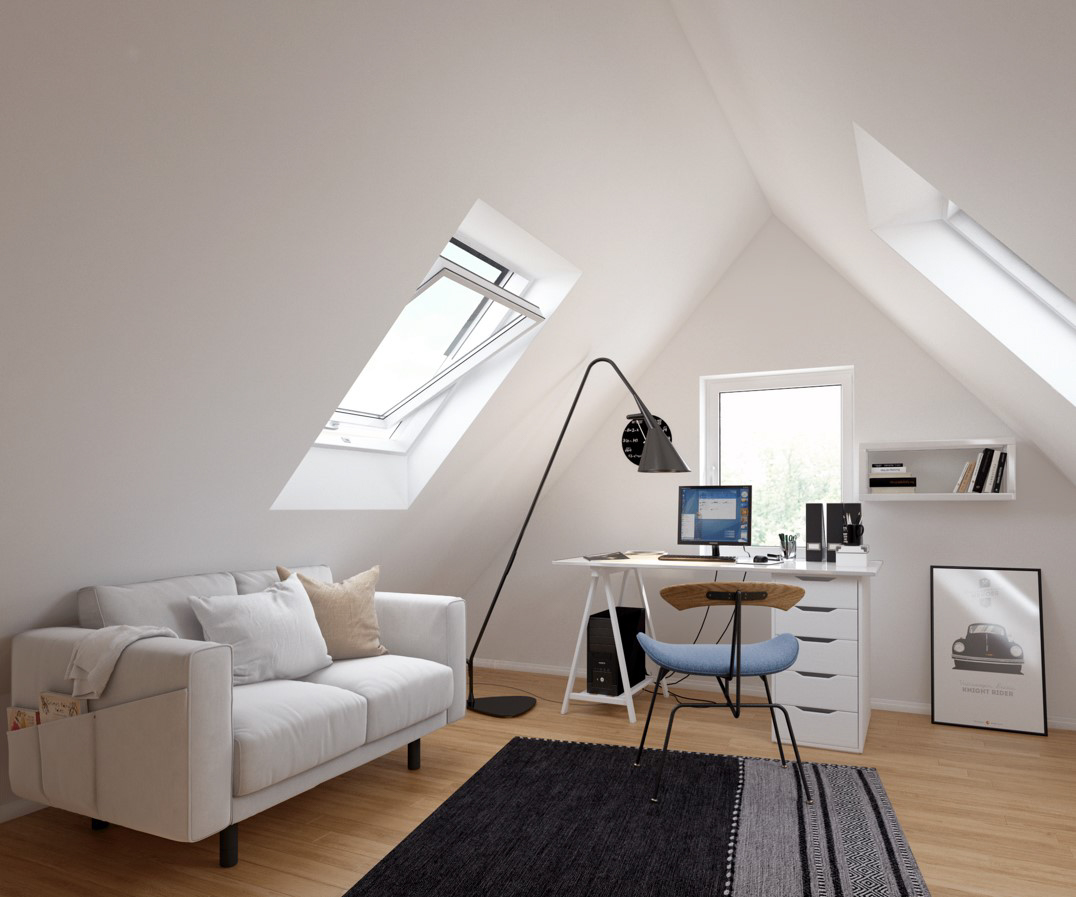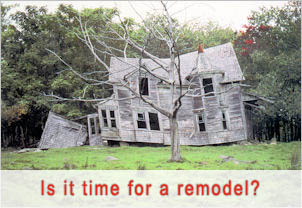
Key Takeaways
- A primary suite addition is more than just increased comfort — it’s a smart investment in your home’s equity and your family’s future.
- A lot of planning goes into it. Clarify your concept, consider space and architecture, and work with experts to make your new suite as functional as it is beautiful.
- Choose between vertical or horizontal expansion by considering your current lot, local regulations, and how the addition affects your indoor and outdoor spaces — weighing functionality with design cohesiveness.
- Add wellness amenities, smart technology and sustainable materials to design a suite that promotes relaxation, energy efficiency and environmental consciousness for the entire family.
- Insulate yourself from the emotional pits of renovation by setting realistic expectations, managing everyone’s expectations through open communication, and preparing for daily disruptions and decision fatigue with simple coping mechanisms.
- Create your budget and include more than just construction costs — we’ll take a look at the hidden expenses and financing options as well.
Adding a primary suite means planning for increased square footage and improved flow. It frequently requires design alterations, new walls, plumbing, electrical lines, and heating or cooling work. Most projects feature contemporary floor plans with a bedroom, en-suite bath, closets and sometimes a cozy sitting area. Some owners opt for smart home touches, such as improved lighting and climate controls, for added convenience. To hold expenses and labor to reasonable levels, the vast majority of us work with an architect or contractor. Clear plans assist with city regulations and building codes. Upgrades could increase the home’s value and coziness. The highlights in the following sections demonstrate what to consider before, during, and after the work.
Why Add a Primary Suite?
When you add a primary suite, you’re creating a sanctuary of sorts in your home — one that provides comfort and privacy, along with true purpose. It not only increases square footage but can transform your lifestyle, make your home future-proof, and even enhance your home’s value.
Your Sanctuary
A primary suite isn’t just a bedroom — it’s your sanctuary, and you create the vibe. Customizing with a reading nook, a fireplace, or a private balcony can set this space apart. These touches provide comfort, allowing you to unwind and refresh in serenity.
Tucking the suite away from more active areas of the house provides you with the needed privacy. With soothing colors, plush textures, and natural light, the suite can be a real sanctuary, blocking out the noise of the everyday. A comfy chair, heavy curtains, or a soundproof door make it even nicer.
Enjoy an escape within your own home, where you can begin the day in quiet comfort with coffee or close it out with a book, all without leaving the room. They don’t get this level of privacy and comfort in a regular bedroom.
Future-Proofing Home
Thoughtful design of the primary suite can assist in your ability to age in place, supporting mobility requirements with wider doorways or a walk-in shower. These features are important if you plan to remain long-term or have kids with evolving needs.
Flexibility is what matters. Some families utilize the suite for aging parents, others for grown children. The suite’s layout can evolve as your requirements do, allowing you to adapt more easily along the way.
Hard-wearing, easy-clean materials can endure style periods and rough wear. Which, in turn, saves you money and effort down the road, when you want the space to still be serviceable and beautiful years later.
Increased Value
Primary suites are a buyer’s dream. Including one can differentiate your property, particularly in fierce markets.
A well-appointed suite can often provide a healthy ROI, particularly if it aligns with what buyers want. Check local trends—things such as private baths or walk-in closets could be extremely valuable to your area.
Building Your Dream Suite
When it comes to strategic remodels, adding a primary suite is a big deal: it completely changes the way a home accommodates day-to-day life. It takes thoughtful planning and considerate collaboration, and continuous management to create something beautiful and functional. Each phase relies on the previous, requiring visionary insight, technical expertise, and pragmatic judgment.
1. Vision & Lifestyle
Begin by scheming how the new suite slots into your day. Need a silent hideout or a practical office? Rank your non-negotiables–perhaps a sizable walk-in closet, en-suite bathroom, or private study. Consider how these elements can weave into your cycles, providing concentration during the daylight and solace when it’s time to sleep. Collaborate with a designer to translate these goals into concrete plans that fit your style and requirements.
2. Space & Structure
Take stock of your home’s existing arrangement. Seek neighboring rooms that could become one — two diminutive bedrooms transforming into a sizeable suite. Inspect the skeleton—walls, floors, and supports—to determine what modifications can be done without extensive reconstruction. The flow counts, ensure the suite seems both linked and secluded. Choose whether you want to add, up, or reconfigure the floor plan. Sometimes a bump-out or 2nd story addition is the better play depending on your lot and zoning.
3. Design & Layout
Design an exact footprint that utilizes each square meter wisely. Go with a floor plan that includes useful features–an ensuite bath, laundry room, and ample storage. Design for lots of daylight and natural airflow, which can enhance the spirit and reduce energy consumption. Select finishes and decor that flow with the rest of your home. Shoot for something in between, where the space resonates as both practical and warm.
4. Team & Permits
Bring together skilled professionals: an architect, a contractor, possibly an interior designer. Know local building codes and secure proper permits before you begin, to prevent expensive delays. Keep in communication with your team along the way—issues are simpler to address early.
5. Build & Finish
Follow the build phase carefully. Ensure each step aligns with the plan, from framing to finishes. Select durable, appealing materials. Clever design touches, such as built-in storage or well-planned lighting, can be a bonus. Before you take possession, check one last time to make sure everything is as you expected.

Building Up vs. Building Out
Your decision to build up or build out influences the size, expense, and difficulty of your primary suite addition. If you’re dealing with a cramped city lot or an extensive suburban property, the choice depends on zoning, lot size and property lines in addition to the long-term functional and aesthetic consequences.
Vertical Additions
Pros | Cons |
Preserves outdoor space | Requires structural reinforcement |
No impact on lot lines | Subject to increased design commission scrutiny |
Potential for better views | Must add stairs/elevator, roof removal required |
Adds usable floor area | Can be disruptive during construction |
Building up works when the lot size is small. If the first story footprint is small, this technique doesn’t impinge on property lines, so it’s great for tight city neighborhoods as well. It means bolting down the foundation, taking off the roof, and putting in a staircase or maybe even an elevator. These stairs typically require a structural engineer and can be more expensive because of the complexity. Soundproofing and insulation become more significant, particularly if the new suite rests over living spaces. To maintain the home’s style seamlessly, the exterior of the new level should mirror the materials and lines of the existing. Local design boards might have to sign off.
Horizontal Additions
Outward expansion gains you ground-level square footage—the ideal place to add that roomy primary suite. You can add on to your kitchen, connect a home office, or build a four-season room. Building out tends to interfere with your daily existence less than building up, because a good portion of the construction occurs beyond your living space.
This approach cuts into yard space, impacting your outdoor living and garden areas. It might mean updates to landscaping to maintain robust curb appeal. Property lines and zoning regulations need to be researched as well to prevent delays or lawsuits. On a small lot, building out may not be an option, or it might push the boundaries of what’s permissible. Entry from the great home should seem seamless—broad openings and open views maintain this connection.
Beyond the Basics
Adding a primary suite is about more than just making a bigger house. It’s important to think about smart design, comfort, and how the space will be used. Choosing the right features for health, technology, and being eco-friendly helps create a room that fits modern living. This not only makes life better but also adds lasting value to your home.
Wellness Features
Spa-like bathrooms have become the norm, complete with soaking tubs or steam showers that have turned bath time into a daily retreat. These enhancements aren’t merely aesthetic—they make for stress relief and good health. Most suites have meditation corners or quiet nooks, providing residents with a sanctuary to pause and recharge, especially useful in bustling homes.
In-floor heating is a smart decision for cold regions and decadent any time of year. Tiles made with wood, stone or clay, and soothing color palettes, establish a soothing mood and tie the inside to nature. Universal design features, such as wider doors and no-step showers, render suites accessible for all ages, a big plus for multi-generational homes or families wanting to age in place.
Smart Technology
Smart tech simplifies and streamlines life. Automated lighting, temperature, and security systems allow users to control settings from their phone or voice assistant. This is a godsend for those with hectic lifestyles or mobility challenges. Easy control panels and built-in apps keep the learning curve minimal, smoothing out your daily routine.
Energy-efficient fixtures, everything from LED lighting to low-flow taps, reduce your operating costs and the planet. A lot of homeowners today select appliances and systems that are upgradeable as new features become available, so their suite stays current. Weather-resistant outlets and motorized shades, or UV-filtering windows, enable comfort and safety to spill into evening hours or brutal weather.
Sustainable Materials
Eco-friendly materials cut the suite’s footprint. Bamboo flooring, recycled glass, and non-toxic paints are all popular picks because of their low impact and longevity. Selecting lasting materials equates to less fixing, and quality insulation and double-glazing reduce energy consumption.
Local options frequently provide custom choices that suit both budget and design. Even little touches — a breakfast bar from a 2-foot bump-out, or a larger nook from a 4-foot extension — can employ sustainable sources and smart design for enduring value.
What No One Tells You
A primary suite addition is a significant investment, both monetarily and emotionally. Beyond the obvious expenses and strategizing lie the unspoken realities. It’s something to be aware of and prepared for if you’re planning this type of remodel.
Managing the Emotional Side
Talk to your family about what you want to do for the project, and make sure to check in with each other often. Remember to take breaks and find little ways to celebrate your progress, even if it’s just a little bit. Set clear and achievable goals for each step to help keep stress down. Celebrate your wins, no matter how small, to keep a good attitude.
Effective communication with your household members establishes common expectations that you can return to when things get shaky or uncertain. Milestone celebrations — whether it’s completing the demo phase or selecting the double vanity’s perfect tile — can help buoy morale for those marathon weeks.
Daily Disruption
Construction means non-stop noise, dust, and workers in and out. Not even a thoughtfully planned, open floor plan can protect you from the life assault of clutter and chaos. If you’re living onsite, think about if you’ll have to decamp to another room, or even a different location, temporarily. Some camp out in makeshift kitchens or bathrooms, others crash on friends.
Flag a ‘safe zone’ every day. It can be a door-closed room, removed from the work, where you chill or work. For families, this is crucial to maintaining at least a bit of normalcy in the frenzy. Talk to your contractor about workers’ arrivals and departures—knowing their schedule aids your planning.
Decision Fatigue
When planning a primary suite, start with the key features you want. Think about things like a spacious soaking tub, separate closets, or a wide glass shower door—no tiny 18-inch spaces, please! Look for spots you can improve, such as turning an empty corner into extra storage. Decide if you want to build out or up, as both options have challenges like needing strong foundations or adjusting for more weight. Focus on important elements like layout, closet access, and bathroom use, since a poor design or awkward closet doors can waste valuable space. Work with trusted family members or a designer for the smaller details to avoid feeling overwhelmed. Remember to take breaks to reassess your choices instead of rushing through them.
Budgeting Your Addition
Budgeting your addition is key to a successful primary-suite expansion. Each project is unique, defined by the floor plan, your objectives, and the scale of work. Expenses can vary widely depending on whether you build outward or upward, the finishes you select, and the mechanical updates required. A solid budget helps you monitor your expenses, anticipate the unexpected, and align your priorities with your resources.
Cost Per Square Foot
Feature / Finish | Low Estimate (per sq ft) | High Estimate (per sq ft) |
Basic Construction | $80 | $220 |
High-End Finishes | (variable, but higher than basic) | — |
Smart Bathroom Fixtures | $300 (budget models) | $3,150 (advanced smart toilets) |
Custom Walk-in Closet | (no specific data; included in suite cost) | — |
Oversized Windows | (not separately itemized) | — |
Basis of estimates:
- Primary suite additions, including bedroom and bath, average around $160 per sq ft, with a typical range of $80 to $220 per sq ft.
- Basic room additions generally range between $80 and $200 per sq ft, depending on complexity.
Smart bathroom fixtures:
- Smart toilets range from around $300 for entry-level models up to approximately $3,150 for fully featured ones.
Other line items, such as walk-in closets or oversized windows, aren’t typically broken out per square foot in standard cost guides and would normally be folded into the overall suite addition cost.

Additional Budgeting Advice
Comparing rates between contractors remains essential. Even if you get lower per-square-foot quotes, premium features like high-end materials or advanced tech can drive up the total. Always ask for detailed bids that itemize finish levels, labor, materials, and site-specific challenges.
For features like smart toilets, which can cost anywhere from a few hundred dollars to several thousand, budget them early. The design-build approach—starting with a full evaluation of your space—can help clarify which finishes and features are realistic for your budget.
Hidden Expenses
When you add a primary suite, there are several important things to consider. You might need to upgrade the plumbing or electrical systems. If you’re building on the first floor, you might also have to do some foundation work. Site preparation or demolition could be necessary, along with paying for permits and inspections. Don’t forget about landscaping or fixing up the outside of your home. Sometimes, you may need to temporarily move out or find storage for your things. You might also run into unexpected structural repairs.
First-floor additions could imply expensive foundation work and the need to extend mechanical systems. A second-story suite eliminates new foundation expenses but can still necessitate fortification. Don’t forget to add at least 10–15% contingency for these surprises.
Financing Options
Home equity loans and lines of credit are popular ways to fund a primary suite. Certain areas have government-initiated programs for home improvements—look these up to get the most funding. A conversation with a financial advisor will help customize your approach, particularly if you envision remaining in the home throughout your senior years. Just be sure to style your financing plan to your broader financial situation and future needs for the addition.
Conclusion
To add a primary suite, consider the space, the plan, and your lifestyle. See what suits you. Decide whether you expand upward or outward. Both add steps and costs of their own. Consider your daily flow. A good one helps you rest and gives you more room to grow. Look out for sneaky costs and minor surprises here and there. Work with people who know the task. Easy actions, correct direction, and a focused objective go a long way. Leave your advice or inquiries in the comments. Let’s get these designs working for actual homes, not just drawing boards. Your tips and comments will assist others who want to begin as well.
Frequently Asked Questions
1. What is a primary suite in a home?
A primary suite is a bedroom with an en-suite bathroom. It can have additional space, storage, and occasionally a walk-in closet or sitting area to give it a more luxurious feel.
2. How long does it take to add a primary suite?
Most primary suite additions require 3-6 months. The timeline varies based on design complexity, permits, and weather.
3. Is it better to expand a primary suite up or out?
Adding a primary suite expanding up saves yard space, but can be more expensive since the foundation and roof structure need to be modified. It’s easier to grow out if you have ample land. The right choice depends on your home’s floor plan and local regulations.
4. Do I need permits to add a primary suite?
Yes, you’ll typically need building permits. Your plans must be approved by your local authorities.
5. How much does adding a primary suite cost?
Costs vary widely, depending on size, materials, and location. On average, you can expect to spend between $49,050 and $119,900. Always obtain quotes from licensed experts.
6. Will a primary suite addition increase my home’s value?
A thoughtfully designed primary suite can add value to your home and attract buyers. Among the most sought-after real estate enhancements.
7. What are the common challenges when adding a primary suite?
Roadblocks include cost overruns, surprise structural problems, and permit or sourcing delays. Working with experts mitigates risks.
Your Dream Second Story & Primary Suite Built by Mares & Dow Construction & Skylights – Let’s Create the Extra Space You’ve Been Dreaming Of
Unlock your home’s full potential with a custom second story or primary suite addition from Mares & Dow Construction & Skylights. With over 40 years of experience, we specialize in high-quality expansions that blend seamlessly with your home’s existing structure and lifestyle needs.
Whether you’re looking to add a luxurious primary suite, expand upwards with a second story, or enhance your living space in other ways, we customize each project to suit your vision, your home’s architecture, and your long-term goals.
Key benefits of our second story & primary suite services include:
• Expanding your living space to accommodate growing families or additional functionality
• Boosting your property’s value with expert design and construction
• Creating energy-efficient, stylish living areas designed around your needs
Proudly serving Contra Costa County—including Alamo, Danville, Orinda, Martinez, and San Ramon—Mares & Dow Construction & Skylights is your trusted partner for functional, beautiful, and lasting home expansions.
Contact Mares & Dow Construction & Skylights today for a free, no-obligation quote and let’s build the second story or primary suite of your dreams!
Disclaimer
The materials available on this website are for informational and educational purposes only and are not intended to provide construction, legal, or professional advice. You should consult with a qualified general contractor or industry professional for advice concerning any specific construction project, remodeling plan, or structural concern. Do not act or refrain from acting based on any content included on this site without seeking appropriate professional guidance. The information presented on this website may not reflect the most current building codes, regulations, or industry best practices. No action should be taken in reliance on the information on this website. We disclaim all liability for actions taken or not taken based on any or all of the contents of this site to the fullest extent permitted by law.





 based on
based on 

